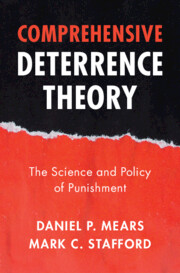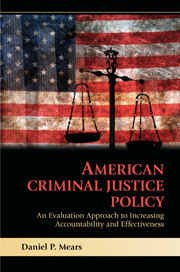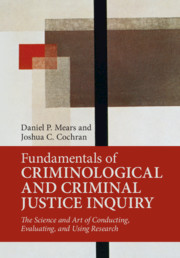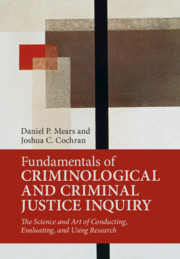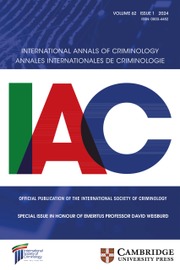Comprehensive Deterrence Theory
First articulated more than 250 years ago, deterrence remains a central theory in criminology and continues to be the bedrock of the vast bulk of criminal justice policy. But few updates to the original theory of deterrence have been made, and crime-based punishment has only grown tougher, resulting in a historically unprecedented growth in imprisonment and an even greater reliance on deterrence to justify all kinds of punishment. These changes have occurred despite consistent or strong evidence to show that such punishments actually deter crime. In this book, renowned criminologists Daniel P. Mears and Mark C. Stafford provide an in-depth understanding of the classical account of deterrence theory, its limitations, and a reconceptualized version that establishes a more complete and powerful picture of how legal punishments can deter crime. Thorough and corrective, Comprehensive Deterrence Theory gives readers a new way of thinking about and understanding legal punishment.
- Shows how classical deterrence theory is flawed, and why this matters for science and evidence-based policy
- Provides a foundation for evaluating and integrating prior research on crime deterrence
- Responds to the interests of diverse reader audiences who want to know what can be done to improve existing or proposed crime policies.
- Shows how classical deterrence theory is flawed, and why this matters for science and evidence-based policy
- Provides a foundation for evaluating and integrating prior research on crime deterrence
- Responds to the interests of diverse reader audiences who want to know what can be done to improve existing or proposed crime policies
Product details
March 2025Hardback
9781009592741
285 pages
229 × 152 mm
Not yet published - available from March 2025
Table of Contents
- 1. Introduction
- 2. The Need for Reconceptualizing Deterrence Theory
- 3. Research on Deterrence
- Comprehensive Deterrence Theory: Intrinsic Elements
- 5. Comprehensive Deterrence Theory: Principles
- 6. Comprehensive Deterrence Theory: Next Steps for Advancing CDT
- 7. Comprehensive Deterrence Theory: Points of Clarification
- 8. Comprehensive Deterrence Theory: Policy Implications
- 9. Conclusion.

